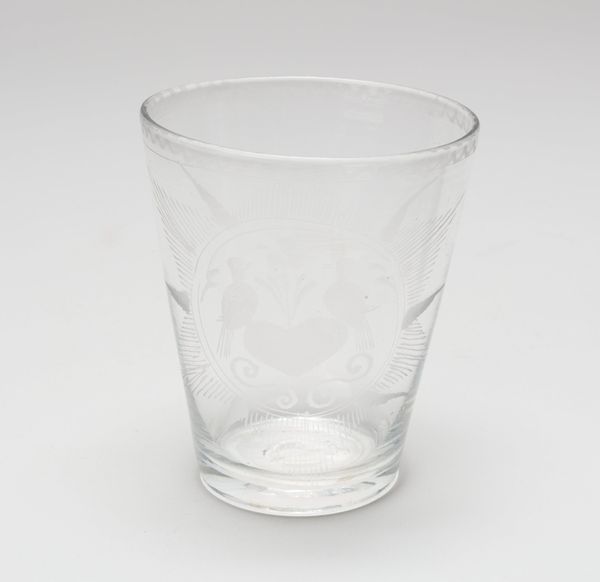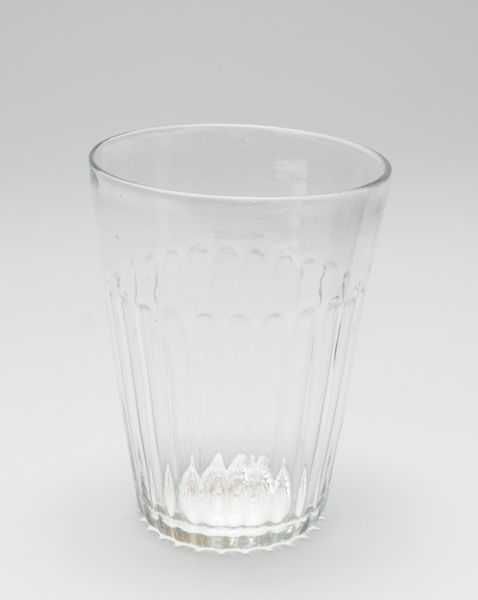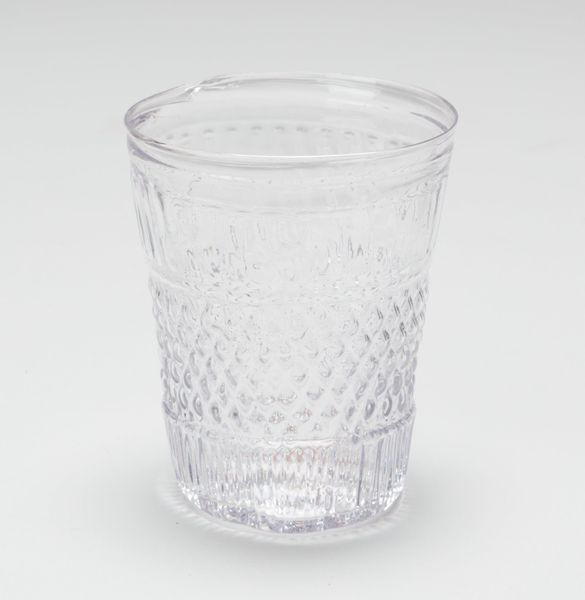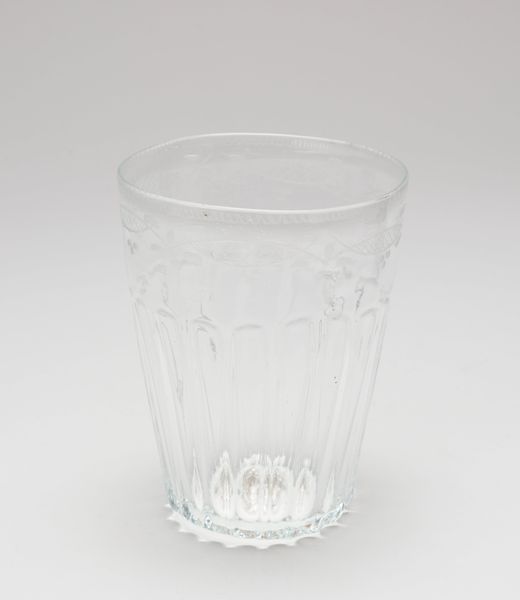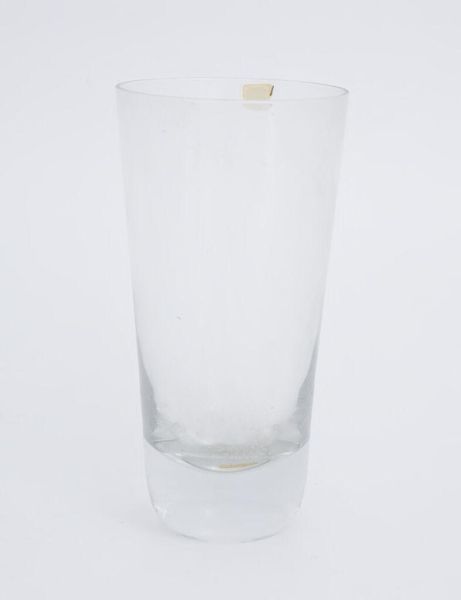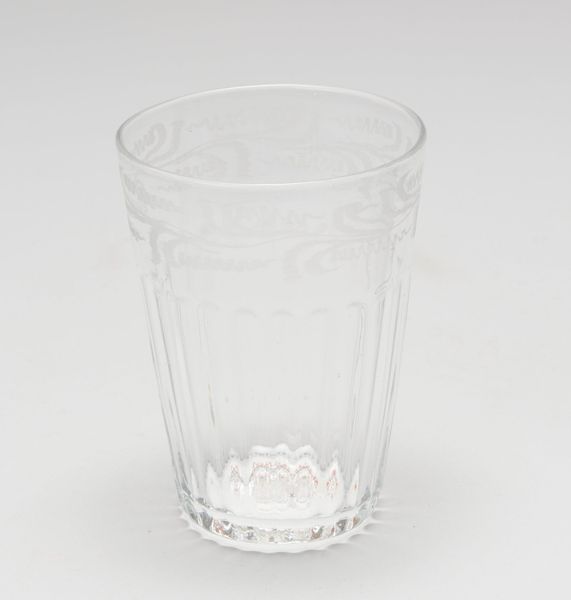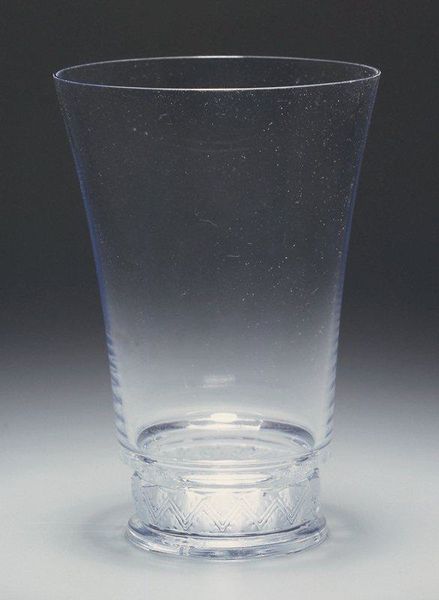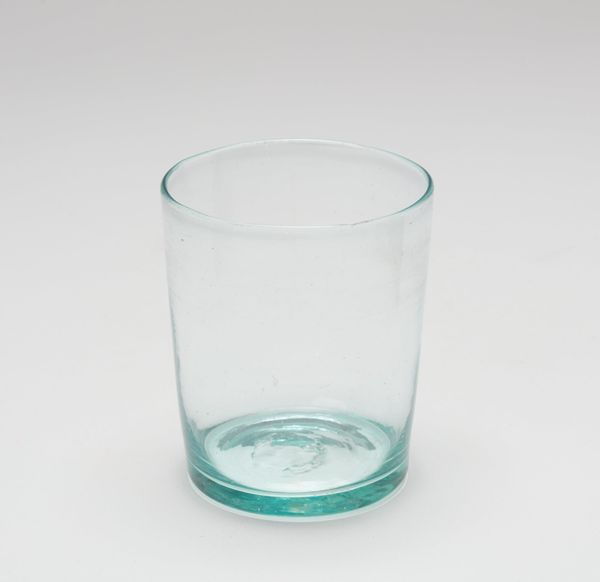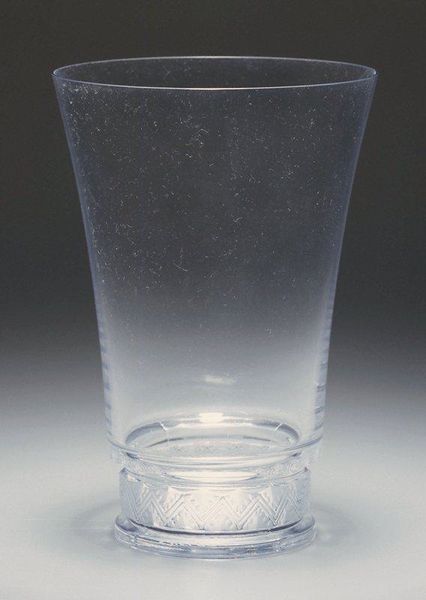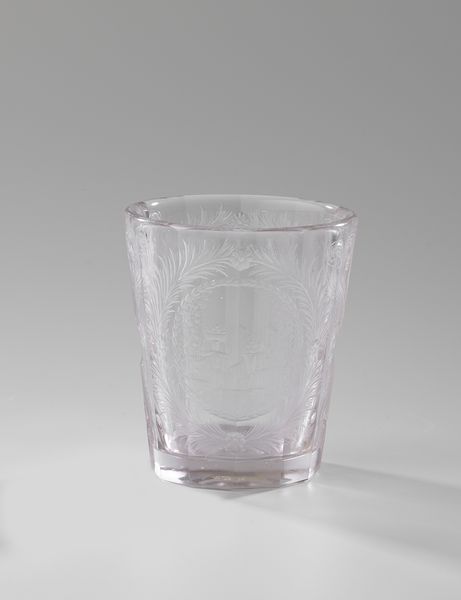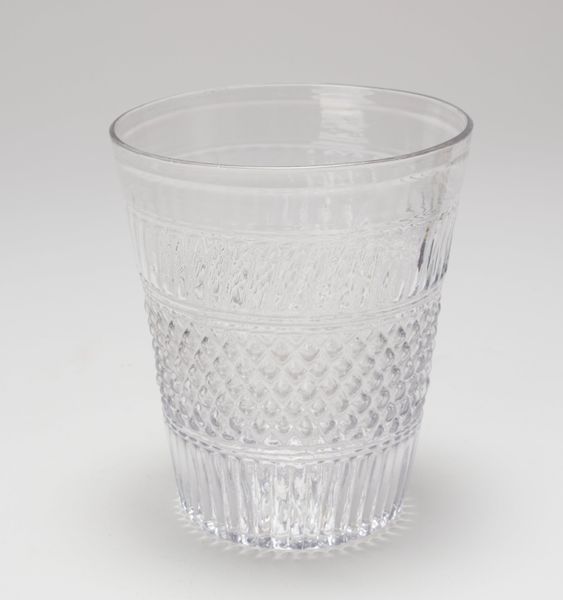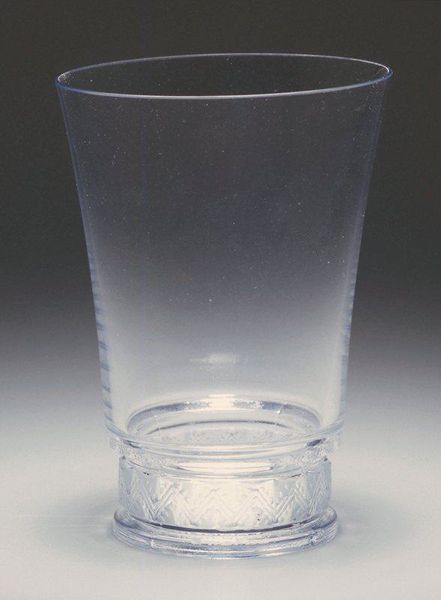
glass
#
glass
Dimensions: 6 3/4 x 5 x 5in. (17.1 x 12.7 x 12.7cm)
Copyright: Public Domain
Editor: Here we have an 18th or 19th-century glass, simply titled "Water glass", housed at the Minneapolis Institute of Art, and its maker is, sadly, unknown. The engraving, almost ghostly in its subtlety, draws me in. What stories can you unpack from such a humble object? Curator: A seemingly simple object, yet it speaks volumes about shifting social dynamics. During the 18th and 19th centuries, the rising middle class acquired items like this to emulate the aristocracy. The delicate engraving suggests an aspiration to refinement. But it also shows a shift in what it meant to be upper-class; from exclusively powerful nobility to people who are "cultured". Editor: So, owning a decorated glass was a symbol of status? Curator: Precisely. Mass production, though in its early stages, made such items more accessible, yet the etching maintained an air of exclusivity. Notice the design: possibly a family crest, maybe patriotic imagery? Its legibility speaks to who this was for and who it was keeping out. Also, where was it used? What kind of beverage did it contain? Even if it’s just water, how was water perceived back then versus now? These nuances can offer an avenue for understanding the cultural implications behind the act of simply drinking. Editor: I hadn't considered how something so everyday could reveal so much about societal shifts and aspirations! It really highlights how even mundane objects participate in a bigger cultural conversation. Curator: Absolutely. Art history isn't always about grand paintings or sculptures, but in considering the "stuff" of everyday life to understand cultural priorities. Editor: I’ll certainly view glassware differently now. Thanks!
Comments
No comments
Be the first to comment and join the conversation on the ultimate creative platform.

